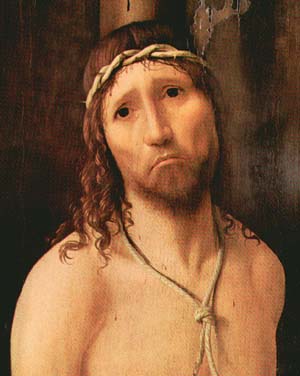|
|
Storia dell'arte - Story of Art
|
|
|
ANTONELLO DA MESSINA Mysterious artist
He was born in Messina maybe in 1430, as Giorgio Vasari wrote in his Biography. There are no informations about the first years of Antonello’s activity, but Vasari explains that the artist studied the art of drawing in Rome. When he went to the Fiandre to learn the art of oil painting at Jon Ban Eyck’s Place, Antonello Da Messina made a lot of paintings thanks to his knoledge about the oil painting and of the Fiammingo Style: endless landscapes, bright, colored atmospheres and many particulars. Naples was the epicentre of the “Mediterranean Renaissance”, where the Fiammingo, Spanish and Provençal styles developed incredibly, thanks to Renato d’Angiò (from 1438 to 1442) and Alfonso d’Aragona (from !442 to 1458). Both the Angioini and the Aragonesi, which reigned respectively in France and Spain, invited in Naples many great artists from Spain and France and even from the Fiandre. Those artists spent a lot of time with Colantonio (Antonello’s mentor) and Antonello da Messina, sharing their knowledge and sense of art. In 1456 Antonello moved back to Messina and in 1457 he painted his first official work (St. Michele dei Gerbini di Reggio Calabria). He spent a short time in Venice in 1475 and in a few cities near Milan, but in 1476 he went back to Messina and he spent the rest of his life there, until he died. During that period the noble Giovanni Mirulla hired the artist to make a painting of St. Mary with a golden background and the two Gonfaloni (one for the Church of St’ Elia dei Disciplinati and the other for the Church of St. Nicolò alla Montagna). Unfortunately the three works got lost after the heartquake in 1783. The Gonfaloni are linear piece of wood with an image which is painted in the middle, they were painted very often by both sides. In 1460 Antonello did an important trip with all his familyand he also met his father in Amantea (Calabria). Someone supposed that the artist went to the Fiandre , because when he got to Messina he showed kind of a new style. In 1472 he started a new Gonfalone for the Church of Santo Spirito in the small city of Noto; which was an important cultural centre. He met Francesco Laurana, they shared their ideas and their styles. He showed lately some influencesof the Flamingo painting, especially in the works “Crocifissione” (Romania) and “St. Girolamo nello studio” (London). The influence of Piero della Francesca is showed in the late paintings (“Le Annunziate”, Pinacoteca di Monaco; “The Salvador Mundi”, National Gallry London, which reveal a new sense of the Space. The “Madonna con Bambino” (Washington) is a great example of the Fiammingo particolarism. In the Polittico of St. Gregorio (1473) Antonello shows a fake sense of tridimensioanl space, that highlight St. Mary and the Saints Gregorio and Benedetto. In his portraits, Antonello gives his characters psychological aspect; he used a Fiammingo’s style to paint his characters. He represented a suffering Christ n his works; he choosed the most painfull moment, while Jesus hanging on the cross wore the crown. He got tuberculosis in 1479, he knew he was dying and he asked to be buried in a small cemetery, that was destroyed by the storm in 1863. He played a central role in the artistic life in Sicily, no other artists could replace him or continue his work.
His most important works are:
|
|
|
